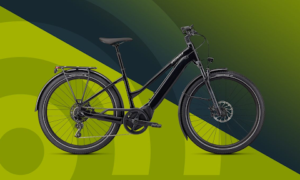In recent years, electric bicycles, known as e-bikes, have experienced a tremendous surge in popularity. These cutting-edge vehicles have emerged as an alluring substitute for traditional pedal-powered bikes, seamlessly integrating human power with electric assistance, creating a compelling and enticing mode of transportation.
While these modern marvels offer numerous advantages, it is vital to acknowledge the potential dangers and safety concerns associated with e-bikes when compared to their traditional counterparts.
The Need for Caution: Speed-Related Hazards
One prominent safety concern linked to e-bikes lies in their ability to reach higher speeds, courtesy of their electric motors. Nevertheless, this heightened velocity amplifies the likelihood of accidents and collisions, particularly in bustling urban environments. It becomes imperative for riders to exercise caution, adhere diligently to local traffic laws, and maintain complete control over their e-bike’s speed to sidestep potential perils.
Taming the Weight: Maneuverability and Control
The additional weight stemming from e-bikes’ battery and motor inevitably impacts their overall maneuverability. Maneuvering e-bikes demands more effort, especially when navigating through tight turns, abrupt stops, or unpredictable circumstances that call for swift responses. E-bike riders need to acquaint themselves with their specific model’s handling characteristics, honing their riding skills to ensure safe navigation across diverse traffic scenarios.
Powering Concerns: The Battery Factor
E-bikes rely on rechargeable batteries, presenting a distinct set of safety considerations. While modern battery technologies have advanced significantly in terms of reliability and performance, there is still a potential risk of battery malfunction, overheating, or rare instances of fires. Adhering to proper maintenance routines, conducting regular inspections, and following manufacturer guidelines concerning charging and storage practices are pivotal in mitigating these risks and ensuring rider safety.
The Long and the Short: Increased Weight and Extended Stopping Distances
Owing to their augmented weight, e-bikes often necessitate a more substantial distance to come to a complete stop when compared to traditional bicycles. This elongated stopping distance can pose challenges, particularly when faced with sudden obstacles or hazards. E-bike riders must uphold a safe following distance and cultivate a proactive approach to anticipate potential dangers ahead, thereby mitigating the risks associated with extended stopping distances.
Bridging the Gap: Infrastructure Adaptation
The escalating popularity of e-bikes has brought to light the pressing need for comprehensive infrastructure adaptation designed to accommodate these vehicles securely. While some cities and regions have made notable strides in this endeavor, others may still lack dedicated e-bike lanes or adequate charging stations. Many states and cities are beginning to accommodate and regulate these popular vehicles. For example, California has passed legislation, known as the Omnibike Bill, regulating where e-bikes can be ridden. The dearth of appropriate infrastructure amplifies the vulnerability of e-bike riders to accidents and collisions. Therefore, it becomes crucial for urban planners and policymakers to proactively address these infrastructure gaps, ensuring the safety of e-bike riders.
Conclusion
Electric bicycles have environmental benefits, enhance the travel experience, and present an exciting transportation option. However, it is vital to recognize the potential dangers and safety concerns they entail when compared to traditional pedal-powered bikes. Factors such as increased speed capabilities, maneuverability challenges, battery-related risks, extended stopping distances, and limited infrastructure adaptation all warrant meticulous consideration by e-bike riders. By raising awareness about these potential hazards and advocating responsible riding practices, we can collectively foster a safer environment for both e-bike users and other road users.



































